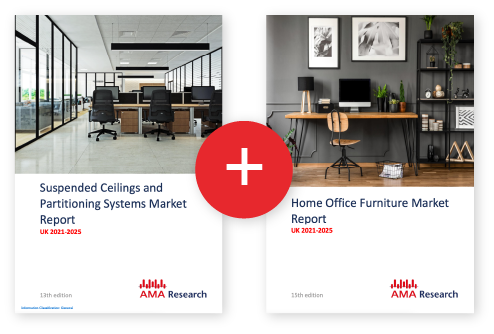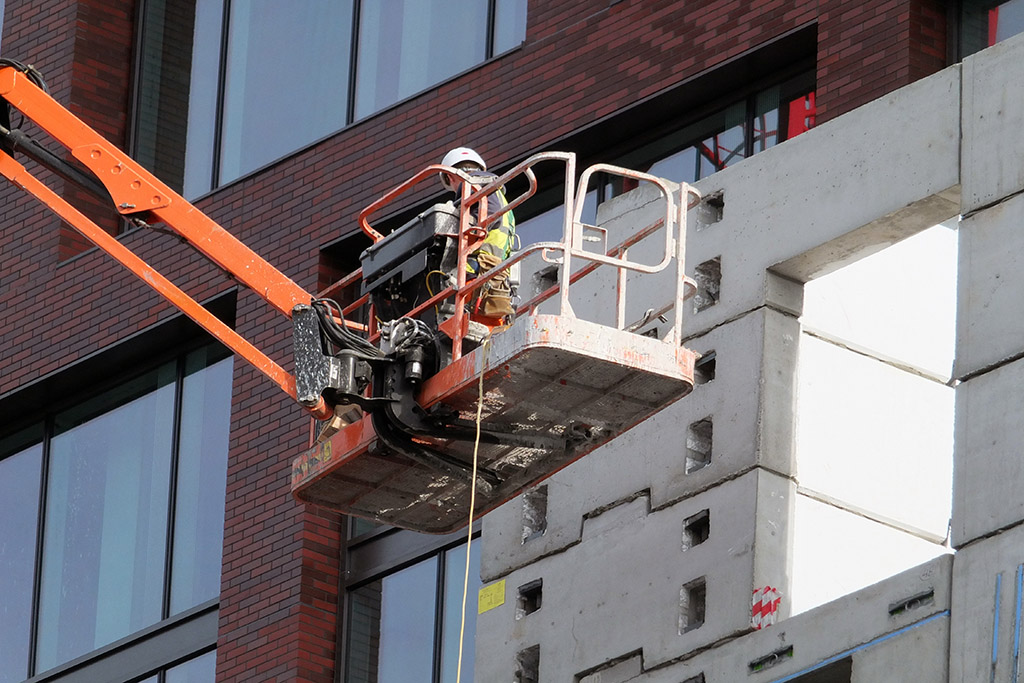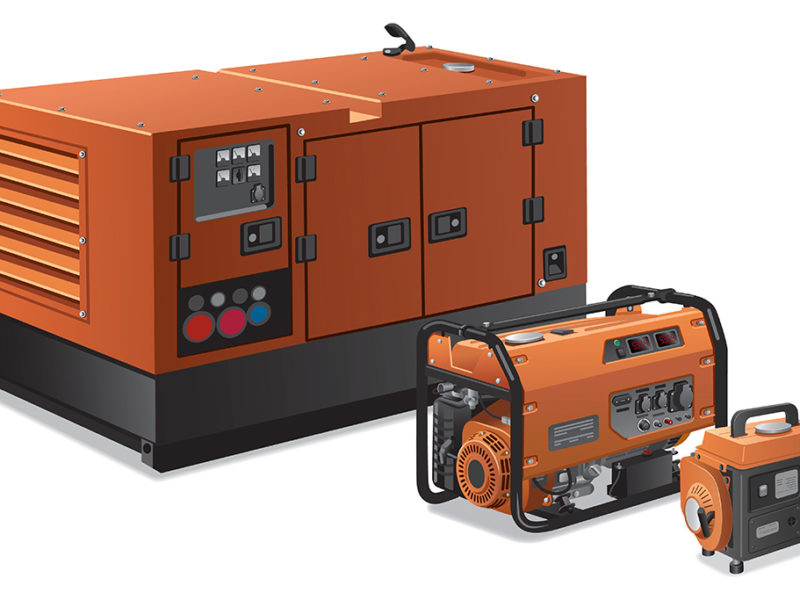Access Equipment Market Report – UK 2018-2022
Available as an Instant Download PDF
The 13th edition of the ‘Access Equipment Market Report – UK 2018-2022’ represents an up-to-date and perceptive review of the market and its development. This report covers both non-powered and powered access products – including ladders, scaffolding, access towers, MEWPs and mast climbers.
£1,599.00 Exc. VAT
The 13th edition of the ‘Access Equipment Market Report – UK 2018-2022’ incorporates original input and primary research, and represents an up-to-date and perceptive review of the market and its development. This report covers both non-powered and powered access products – including ladders, scaffolding, access towers, MEWPs and mast climbers.
Key content covered:
- UK Market for Non-Powered Access Products: – ladders – aluminium, wood, GRP and steel; access towers – mobile, stair, span units, folding platforms; scaffolding – system and traditional.
- UK Market for Mobile Elevating Work Platforms (MEWPs) – personnel lifts, trailer mounts, self-propelled booms, scissor lifts, vehicle mounts.
- Others – suspended access systems and mast climbers.
- Market Structure – full review, breakdown of product sectors with major players, shares, company profiles, distribution channels.
- End Use Application Areas – analysis of key end use sectors for access equipment and prospects.
Key areas of insight include:
- Market development 2013-18 – driven by buoyant construction in residential and non-residential sectors (such as offices, hotels, leisure, transport etc).
- Analysis of key product segments – market size and trends, product mix, key suppliers and distribution for ladders, access towers, scaffolding, MEWPs and other powered access systems.
- Key market drivers including construction output in the residential and non-residential sectors, legislation, major end-user markets including powered access hire, tool hire and event equipment hire, as well as other key influences.
- Assessment of market prospects for each sector including market size estimates to 2022 and market trends.
- Major suppliers and shares – ladders, access towers, scaffolding, mobile elevating work platforms, mast climbers and suspended access..
Some of the companies included:
A Bratt, Alto Access Products, Altrad Beaver 84, Altrad NSG, Atrium Gantrys, Cento Engineering, Chase Manufacturing, Clow Group, CoxGomyl UK, Cradletech PJP Services, Easi-Dec, Euro Towers, Façade Hoists, Generation UK, Genie, Haki, Haulotte, Hinowa, Interlink Alloy Systems, JCB, JLG, Kee Safety, Ladders & Fencing Industries, Layher, Lyte Industries, Manitou, Niftylift, Palfinger,Ramsay Ladders, RMD Kwikform, Safety Platforms, SGB, Skyform, Skyjack, Skyking, Snorkel, St Helens Plant, TB Davies, Teupen, Titan Ladders, TopTower, Tractel, Turner Access, Versalift, Werner UK, Youngman, Zarges and more.
The UK Access Equipment Market
- Total access equipment market – analysis of market size by value in 2013-17, historical trends, assessment of market performance 2017/18, forecasts 2018-2022.
- Product mix – non-powered access and powered access products by value, changing mix 2007, 2012, and 2017 – key changes, trends.
- Key market influences – including economic factors, performance of construction sector, legislation, powered access equipment hire, tool hire, event equipment hire market sizes.
- Market prospects – forecasts of potential market performance from 2019 to 2022.
Product Sectors
- Market size – sector analysis split of the total non-powered access equipment in UK and powered access equipment, assessment of market performance since 2013 and forecasts of performance to 2022 for each sector.
- Product mix – value share of individual non-powered access products for 2017 and value share of individual powered access products for 2017.
- Analysis by non-powered access product – including ladders, access towers and scaffolding – market size by sector 2013 to 2017, key influencing factors, forecast performance by sector 2018 to 2022.
- Analysis by powered access product – including MEWPs, suspended access systems and mast climbers, market size 2013 to 2017, review of market sectors in 2017/18, key influencing factors.
- Non-powered access product mix, trends and developments – including share mix by material/type, product developments, etc.
- Powered access product mix, trends and developments – for each sector – MEWPs product mix – scissor lifts, self-propelled booms, vehicle/trailer mounted, vertical masts/personnel lifts etc. Specialist access product mix – suspended access/mast climbers.
- Key market influences – strength of end-use sectors, competition between products, competition from powered access, growth of infrastructure sector etc. including construction output, tool hire and plant hire etc.
- Key suppliers – market shares by product sector – review of key players.
Supply and Distribution
- Review of key suppliers to UK Access Equipment market in 2017. Focus on key suppliers, market shares, corporate changes, recent company performance, etc.
- Key distribution channels- main distribution channels and share 2017 – direct sales, rental/hire market, specialist distributors, developments within distribution channels.
- Focus on rental sector – leading organisations, recent changes within the rental sector.
The access equipment market consists of a range of products designed to enable personnel to work safely and productively at height. Powered access and non-powered access products compete for similar work and within each separate sector, products also compete directly, for example, access towers, scaffolding and ladders.
The rental sector is a key purchaser of access equipment, particularly for MEWPs. This has been particularly relevant in recent years as hire companies have sought to expand and renew their fleets in response to a buoyant construction industry.
The market for powered access equipment has grown more strongly than that for non-powered access, partly because of the exceptional expansion of MEWP rental fleets referred to above but also because of a shift from non-powered to powered equipment, particularly for low-level applications, triggered by safety considerations and the increasing range of powered products available in the low level access sector.
The market has been supported by relatively buoyant construction output over the last two years, most notably in residential construction as the market has responded to Government measures to increase housing stock and encourage housing demand, as well as to general improvements in consumer confidence and economic performance. Non-residential construction output has also performed well over the last two years, particularly in sectors such as infrastructure, offices and entertainment and leisure.
Aside from construction, the events industry is also an important end-user sector for access equipment and the UK has become a key location for events, particularly sporting and musical events, enjoying significant growth in the last decade and developing an established infrastructure of destinations and venues.
- Contents Listing
- 1. INTRODUCTION 7
- 1.1 BACKGROUND 7
- 1.2 SOURCES OF INFORMATION 7
- 2. SUMMARY AND MARKET PROSPECTS 9
- 2.1 SUMMARY 9
- 2.2 MARKET PROSPECTS 10
- 3. ECONOMIC ENVIRONMENT 12
- 3.1 GDP 12
- 3.2 INFLATION & INTEREST RATES 13
- 3.3 UNEMPLOYMENT 14
- 3.4 HOUSEHOLD CONSUMPTION 14
- 3.5 HOUSING & CONSTRUCTION 15
- 3.6 STERLING 16
- 3.7 POPULATION PROFILE 16
- 3.8 CONCLUSIONS 17
- 4. THE UK ACCESS EQUIPMENT MARKET 18
- 4.1 MARKET DEFINITION 18
- 4.2 MARKET CHARACTERISTICS 18
- 4.3 MARKET SIZE 19
- 4.3.1 Background and Market Performance 19
- 4.3.2 Current Situation and Market Prospects 20
- 4.4 PRODUCT MIX 21
- 4.5 KEY MARKET INFLUENCES 23
- 4.5.1 Construction Market 23
- 4.5.2 Powered Access Hire Market 24
- 4.5.3 Tool Hire Market 25
- 4.5.4 Infrastructure Sector 26
- 4.5.5 Events Equipment Hire 26
- 4.5.6 Legislation 27
- 5. NON-POWERED ACCESS EQUIPMENT 30
- 5.1 DEFINITION 30
- 5.2 MARKET SIZE AND PERFORMANCE 30
- 5.3 PRODUCT MIX 31
- 5.3.1 Overall Product Mix 31
- 5.3.2 Ladders 32
- 5.3.3 Scaffolding 35
- 5.3.4 Access Towers 38
- 5.4 SUPPLIERS 40
- 5.4.1 Key Suppliers of Ladders 40
- 5.4.2 Key Suppliers of Scaffolding 42
- 5.4.3 Key Suppliers of Access Towers 45
- 6. POWERED AND SPECIALIST ACCESS EQUIPMENT 47
- 6.1 DEFINITION 47
- 6.2 MARKET SIZE 47
- 6.2.1 Market Size and Performance 47
- 6.3 PRODUCT MIX 48
- 6.3.1 Mobile Elevating Work Platforms 49
- 6.3.2 Specialist Powered Access Products 53
- 6.3.3 Key Suppliers of Mobile Elevating Work Platforms 57
- 6.3.4 Key Suppliers of Suspended Access 60
- 7. DISTRIBUTION REVIEW 62
- 7.1 OVERALL ACCESS EQUIPMENT MARKET 62
- 7.2 MAIN DISTRIBUTION CHANNELS FOR NON-POWERED ACCESS 63
- 7.2.1 Ladders 63
- 7.2.2 Scaffolding 63
- 7.2.3 Access Towers 64
- 7.3 MAIN DISTRIBUTION CHANNELS FOR POWERED AND SPECIALIST ACCESS 64
- 7.3.1 MEWPS Rental Sector 64
- Tables & Charts
- CHART 1: UK ACCESS EQUIPMENT MARKET SIZE AND FORECASTS 2013 – 2022 BY VALUE (£M AT MSP) 9
- TABLE 2: GDP DATA – 2015-2018 – KEY CONSTITUENT ELEMENTS 12
- CHART 3: INTEREST RATES AND INFLATION (CPI) FROM 2000-2022 14
- CHART 4: PDI & SAVINGS RATIO AT CURRENT PRICES 2000-2022 15
- TABLE 5: EXCHANGE RATE FLUCTUATIONS 2014-2020 – STERLING TO THE DOLLAR, AND THE EURO, SPOT RATES 16
- TABLE 6: UK MARKET FOR ACCESS EQUIPMENT 2013-2022 BY VALUE (£M AT MSP) 19
- CHART 7: UK MARKET FOR ACCESS EQUIPMENT MIX BY SECTOR (POWERED & SPECIALIST ACCESS, NON-POWERED ACCESS) 2017 – % BY VALUE 22
- TABLE 8: UK MARKET FOR ACCESS EQUIPMENT – OVERALL PRODUCT MIX (LADDERS, SCAFFOLDING, ACCESS TOWERS, MEWPS, SPECIALIST) BY VALUE AND SHARE 2007, 2012 AND 2017 22
- TABLE 9: RESIDENTIAL AND NON-RESIDENTIAL CONSTRUCTION OUTPUT (NEW WORK AND RMI) GREAT BRITAIN 2013 TO 2022 – BY VALUE (£ BILLION AT CURRENT PRICES) 23
- TABLE 10: UK POWERED ACCESS EQUIPMENT HIRE MARKET AT HIRE MARKET PRICES 2013-2021 24
- CHART 11: UK TOOL HIRE MARKET SIZE AND FORECASTS 2013-2017 (£M) 25
- TABLE 12: UK MARKET SIZE FOR NON-POWERED ACCESS PRODUCTS 2013 – 2022 BY VALUE (£M AT MSP) 30
- CHART 13: UK MARKET FOR NON-POWERED ACCESS EQUIPMENT PRODUCT MIX (LADDERS, SCAFFOLDING, ACCESS TOWERS) 2017 – % BY VALUE 31
- TABLE 14: UK ACCESS EQUIPMENT PRODUCT MIX (LADDERS, SCAFFOLDING, ACCESS TOWERS) IN 2007, 2012 AND 2017 – BY VALUE 32
- CHART 15: UK LADDERS MARKET SIZE AND FORECASTS 2013-2022 – BY VALUE (£M AT MSP) 33
- CHART 16: UK MARKET FOR LADDERS – MATERIALS MIX (ALUMINIUM, GRP, STEEL, TIMBER) 2017 – % BY VOLUME 34
- TABLE 17: UK SCAFFOLDING MARKET SIZE AND FORECASTS 2013-2022 BY VALUE (£M AT MSP) 35
- CHART 18: UK MARKET FOR SCAFFOLDING – MIX BY PRODUCT TYPE (TRADITIONAL, SYSTEMS) 2017 – % BY VALUE 38
- CHART 19: UK ACCESS TOWERS MARKET SIZE AND FORECASTS 2013-2022 BY VALUE (£M MSP) 39
- TABLE 20: LADDERS MARKET – SUPPLIER MARKET SHARES – 2017 40
- TABLE 21: SCAFFOLDING MARKET – SHARE OF LEADING SUPPLIERS – 2017 43
- TABLE 22: ACCESS TOWERS MARKET – SHARE OF LEADING SUPPLIERS – 2017 45
- TABLE 23: UK POWERED AND SPECIALIST ACCESS EQUIPMENT MARKET SIZE AND FORECASTS 2013 – 2022 – BY VALUE (£M AT MSP) 47
- CHART 24: UK MARKET FOR POWERED AND SPECIALIST ACCESS EQUIPMENT PRODUCT MIX (MEWP, SPECIALIST ACCESS) 2017 – % BY VALUE 49
- CHART 25: UK MOBILE ELEVATING WORK PLATFORMS MARKET SIZE AND FORECASTS 2013 – 2022 – BY VALUE (£M AT MSP) 50
- CHART 26: UK MARKET FOR MEWPS PRODUCT MIX (SCISSOR LIFTS, SELF-PROPELLED BOOMS, TRAILER MOUNTED, VERTICAL MASTS/LIFTS, VEHICLE MOUNTED) 2017 – % BY VOLUME 53
- CHART 27: UK SPECIALIST POWERED ACCESS EQUIPMENT MARKET SIZE AND FORECASTS 2013-2022 – BY VALUE (£M AT MSP) 54
- CHART 28: UK MARKET FOR SPECIALIST ACCESS SYSTEMS PRODUCT MIX (SUSPENDED ACCESS, MAST CLIMBERS) 2017 – % BY VALUE 55
- CHART 29: UK MARKET FOR SUSPENDED ACCESS SYSTEMS PRODUCT MIX (TEMPORARY, PERMANENT) 2017 – % BY VALUE 56
- TABLE 30: UK MOBILE ELEVATING WORK PLATFORMS MARKET – SHARES OF LEADING SUPPLIERS 2017 57
- TABLE 31: SUSPENDED ACCESS SYSTEMS MARKET – SHARES OF LEADING SUPPLIERS 2017 60
- TABLE 32: UK MARKET FOR ACCESS EQUIPMENT – DISTRIBUTION SHARE BY CHANNEL 2017 (DIRECT SALES, HIRE AND SPECIALIST DISTRIBUTORS) – % BY VALUE BY PRODUCT 62

Paired Report Discount
Save £250 for every two reports you buy
Discount applied in basket
Frequently bought together

Trusted by industry leaders
For more detailed requests speak to our research experts directly
Research you can depend on
Our reports go deeper to give you the insights needed to make your next strategic move.
- Detailed assessment of the market – analysis of the market structure and recent developments within the market.
- Market prospects up to 4 years – market value, opportunities, impact of Covid-19, Brexit etc.
- Detailed information – market size, influences, market factors and key players.
- Analysis by product group – market size, product mix, sector trends etc.




